The Basics of Mobile App Attribution | Mobio Group
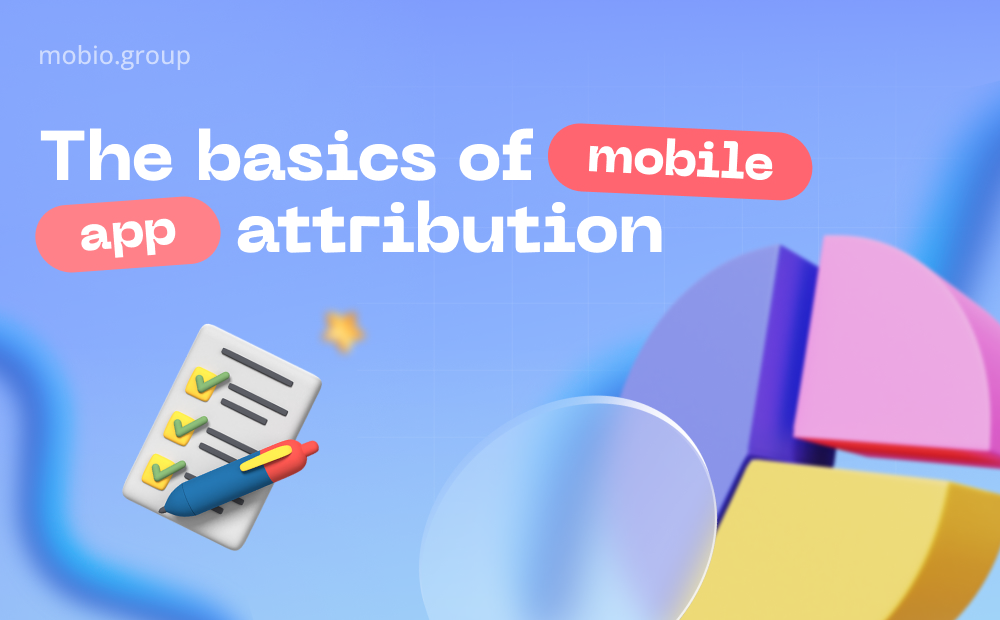
In order to build effective marketing campaigns, optimize the performance of an app and even its design, it is necessary to have data about the behavior of users of that app. And Mobio Group get such data with the help of mobile attribution.
Traffic Attribution and App Analytics
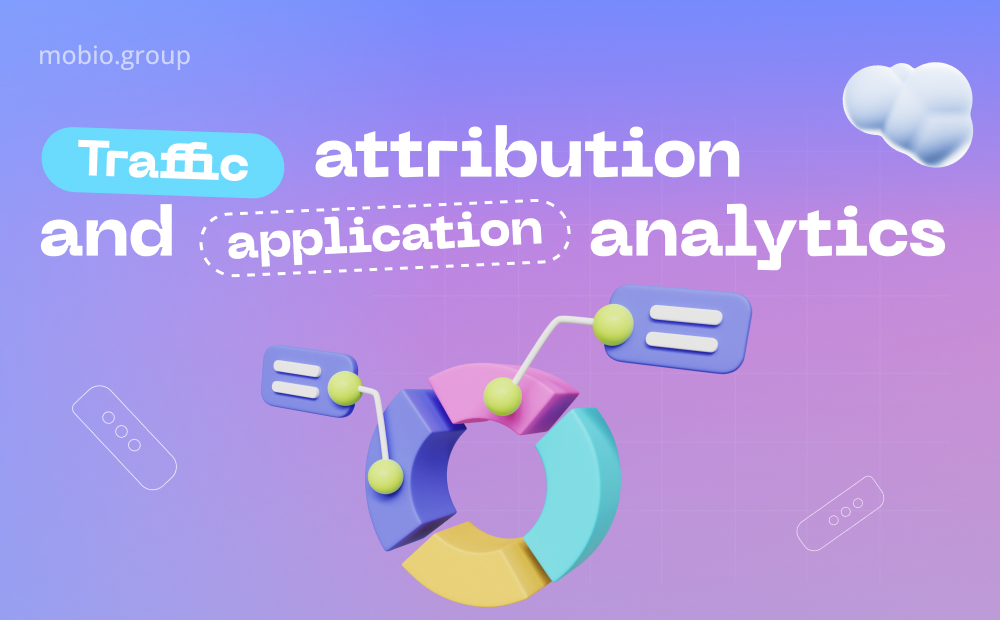
Attribution data links ad impressions and ad clicks to app installs, as well as user actions in the app after installation. In this way, we can trace a user’s journey from their first contact with the app to their last conversion in the app. This gives a clear understanding of which traffic sources and even which specific tools provide the most users or the best quality users, what in the app they like and what discourages them.
In addition, without tracking mobile attribution, it would be unclear which advertising sources to pay for app installs.
To avoid confusion, we should separate these concepts right away.
App analytics allows you to find out exactly what users are doing in the app after installation. This allows you to identify usage trends, strengths, weaknesses, and problems with the app.
Traffic attribution, on the other hand, focuses on analyzing user behavior before installing the app and helps to know which traffic source, ad campaign, and even a specific banner the user came from.
Special Mobile Measurement Partner (MMP) platforms, also called tracking systems or trackers, are used for traffic attribution. They provide analytics on impressions, clicks, installs across multiple channels and networks in one place, they enable automatic user segmentation, and detect and prevent fraudulent traffic.
Although many MMPs can provide data for app analytics as well, it is the attribution of mobile app traffic that we will discuss further in this article.
How to Integrate?
Integrating tracking attribution into your application consists of three steps:
1. Make sure the tracking platform you choose works with the ad networks you plan to use for promotion
Large trackers have integration with the major ad networks, but smaller networks may need to set up a postback URL.
2. You need to build tracking links into your ads
The links are generated by the tracking platform, and each link is unique. Thus, you can track advertising campaigns as a whole, groups of ads, or individual ads.
3. It requires an SDK to be built into your application
The SDK (software development kit) is a tool for integrating your application with the MMP server. It is used to transmit data about the opening of the application and other user actions in the application.
The Traffic Tracking Process
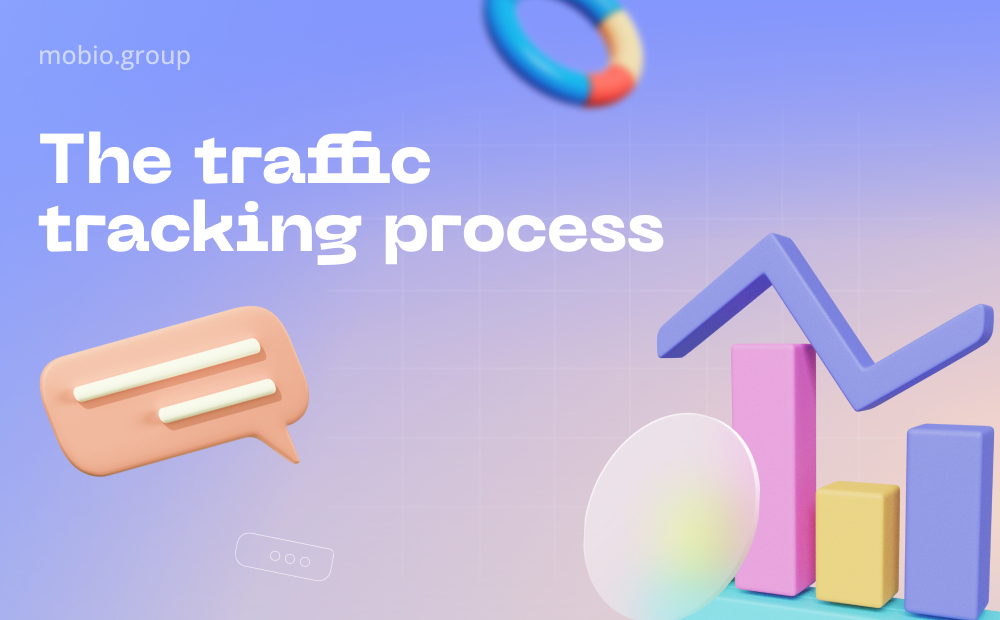
Once we’ve figured out what’s installed and where, let’s look at how the traffic tracking process works.
When a user clicks on an ad that has an MMP link embedded, he gets to the tracker server, where the unique identifiers of his device are collected: Device ID, Referrer, or Fingerprint.
Fingerprint is an alternative tracking method for cases when the Device ID is not available, for example, if the user has disabled his Device IDs. In such cases, a Fingerprint is formed — a digital fingerprint of the device, which includes data about the brand and model of the device, its language, IP-address, and others. In total, up to 60 parameters can be available.
The advantage of this method is that it complies with data privacy rules. The disadvantage is insufficient reliability, which in addition noticeably decreases with the increase of the attribution window (will be discussed in this article later).
The collected data is stored on the server and the user is redirected to the product page in the application store. For the user, this intermediate stage goes unnoticed, as it lasts a fraction of a second.
When the user opens the installed application for the first time, the built-in SDK collects the same data about the device and sends it to the MMP server. There it compares this data with all the ad click data. If the server finds a click on an ad from the same device, it understands which ad network the client came from, and assigns the install to it. The ad network receives a postback that it brought in a customer, and the same information appears in the tracking platform’s analytics system.
If the server finds no match between the data from the SDK and the click data, the installation is assigned to organic traffic.
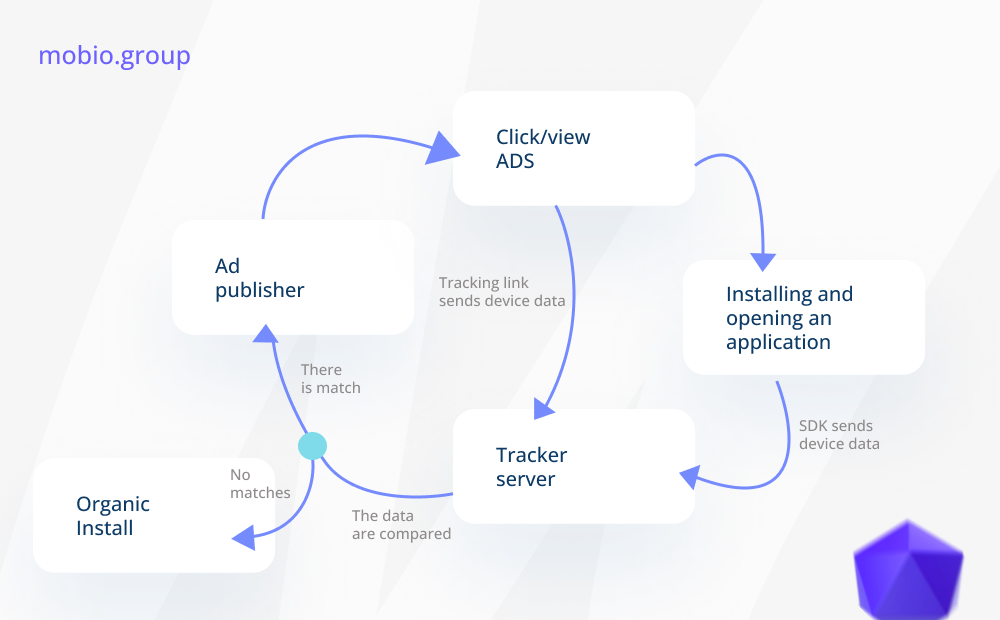
The process is the same for view-attribution, only instead of clicking on an ad, an ad display occurs.
It’s important to understand that the SDK can only contact the server when the user has opened the app, simply by clicking on the download button or installing the app on the device, no tracker can track it.
This means that if the user installed the application and never opened it, or if he downloaded and immediately deleted it, we won’t know about it. For the same reason, we can’t use the tracker to track if the user has problems downloading or installing an application.
Similar processes take place when tracking certain user actions after installing an application: registering an account, completing a trial period, making a purchase, and others. The SDK sends event information and device data to the server, where it is compared to previously saved installation data and, if there is a match, the event is attributed to a specific ad network.
Attribution Models
The customer journey most often involves several steps to the final conversion. Attribution models allow you to determine the contribution of different traffic sources to that goal, which in turn helps you evaluate the effectiveness of advertising channels and allocate installation rewards between them.
• Last-Click Attribution
All value is assigned to the last traffic source that the user interacted with before installing the app.
It doesn’t matter how many ads the user has seen or clicked before, only their last click matters.
Good for events that are decided on quickly. For example, if your goal is to install an app, and you see that downloads most often happen right after the user has seen an ad.
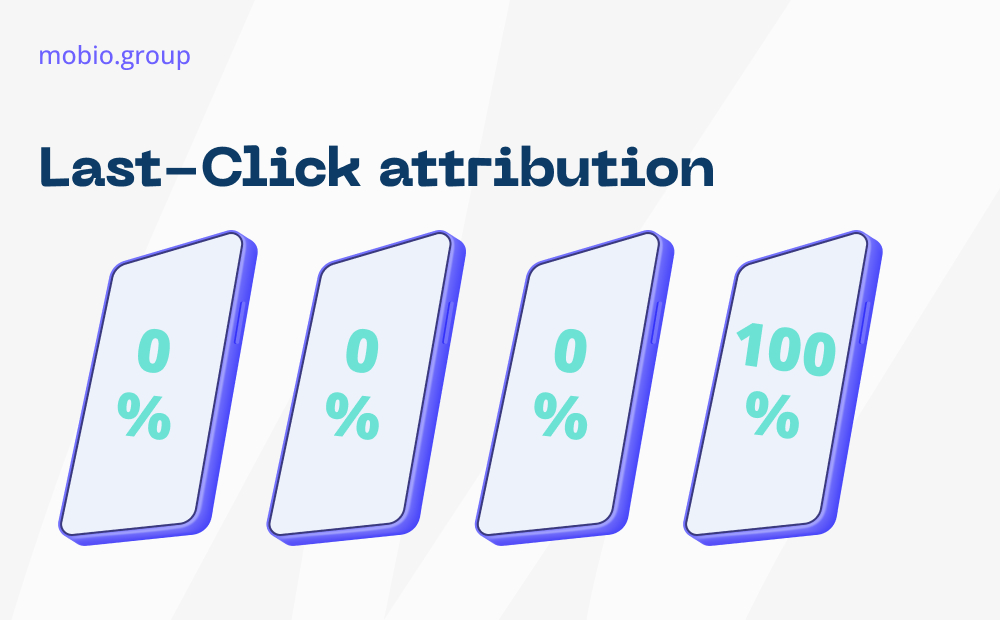
• Attribution by first click
Only the first interaction with the ad is taken into account. It is used when the goal of the advertising campaign is to increase brand awareness or the popularity of the app. It is rarely used to promote mobile apps.
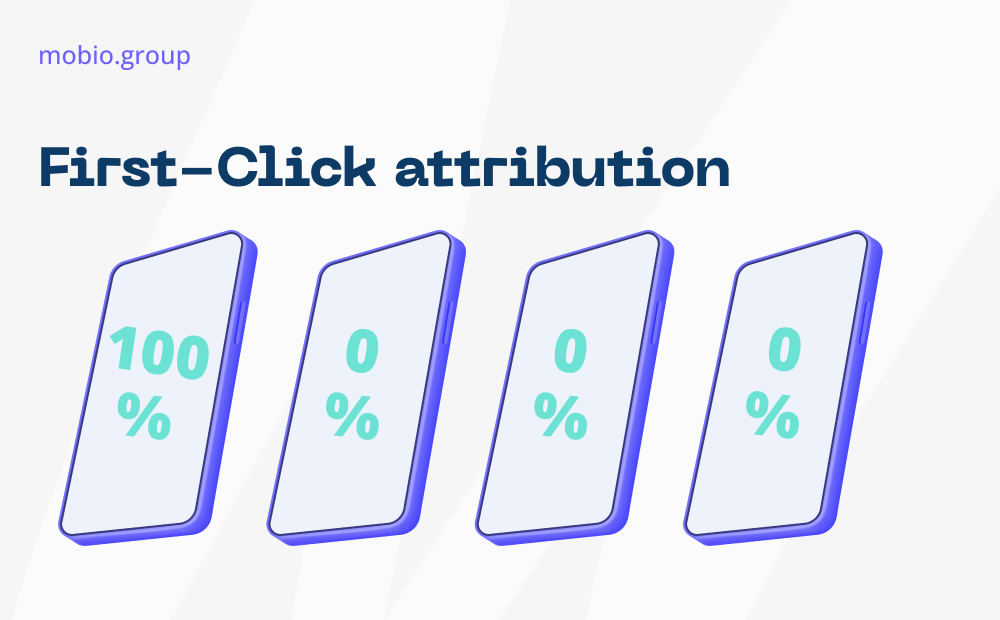
• View-Through Attribution
The installation of an app is based on ad impressions. In this case, the ad channel responsible for the last view before installation is rewarded for that installation.
The underlying assumption of this model is that each direct click-through is users who recall the ad and head to the app store to install the app.
• Multitouch attribution
Unlike previous models, all user contact with the ad is counted here. This way the advertiser gets a complete picture of how the user found out about the app, how many contacts and with which advertising sources it took to install it.
There are different ways to distribute installation rewards:
- Linear attribution: All channels in the chain of interactions are assigned the same value.
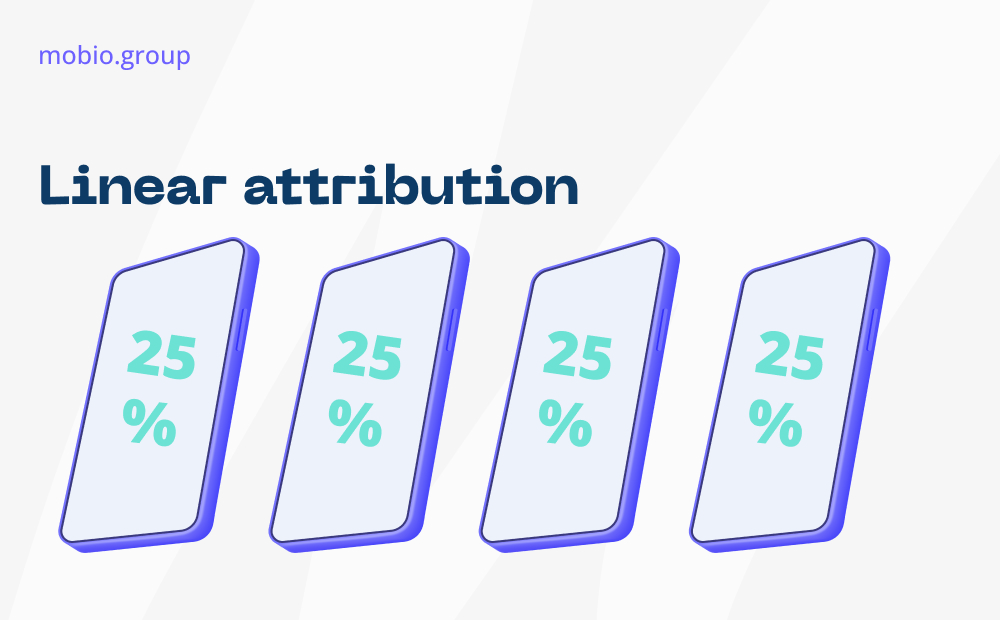
- Position-based attribution: the first and last touch points each receive 40% of the value, with the remaining 20% distributed evenly among the others.
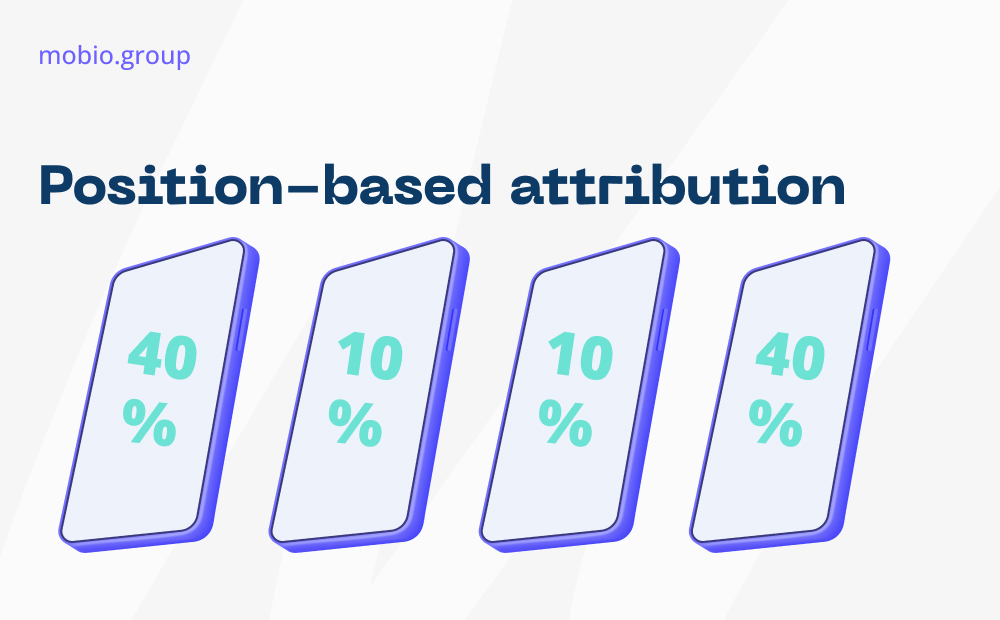
- Time of attribution disintegration: The closer an ad interaction is to conversion, the more value it receives. As the time between interaction and set-up increases, the share of reward decreases.
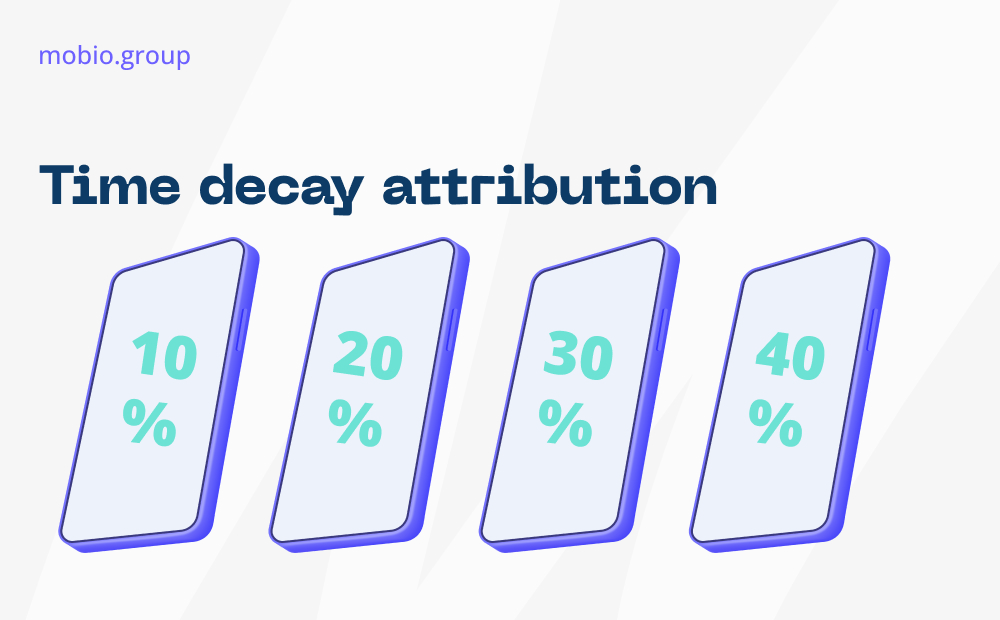
Attribution Window
The attribution window is the maximum amount of time between an ad click (ad view) and a targeted user action in which a conversion is attributed to that ad. If user activity occurs outside of the window, the event is not attributed to any advertising channel and is attributed to an organic installation.
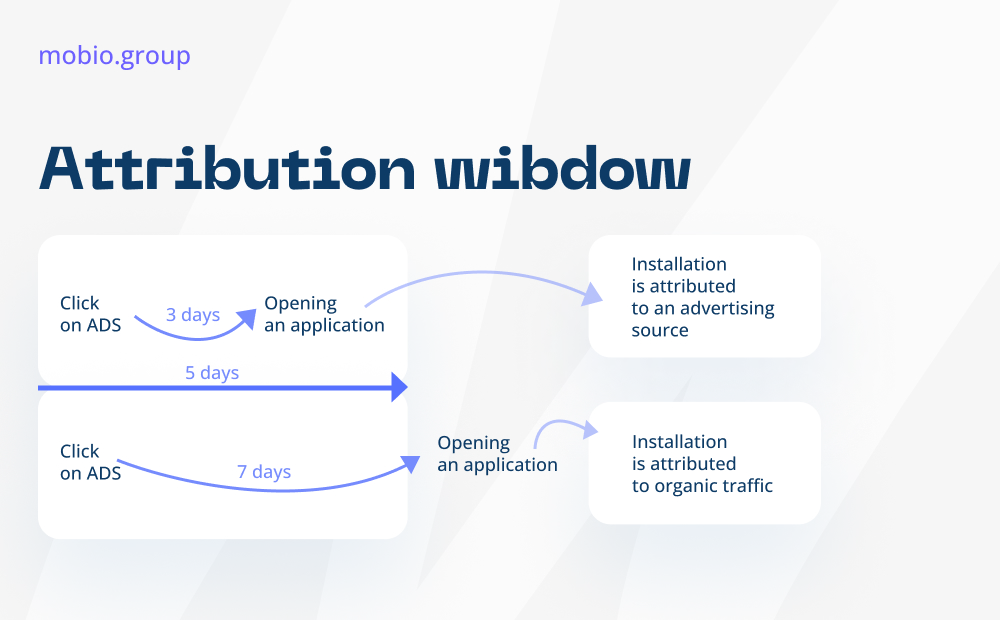
The attribution window is customizable for a specific ad campaign and depends on its purpose, attribution model, application specifics, ad source and other parameters. For example, it makes sense to set shorter windows for new ad sources and gradually increase them. It’s true that many large advertising platforms have standard windows that cannot be changed.
Attribution tracking is an important component of mobile app marketing. Mobio Group uses a variety of tracking platforms that combine data from different traffic sources, advertising campaigns and events within applications into a single system. This makes it possible to track install rates, conversions, and a host of other metrics, study audiences and their interaction with the app, analyze the effectiveness of advertising channels, and make data-driven decisions.


